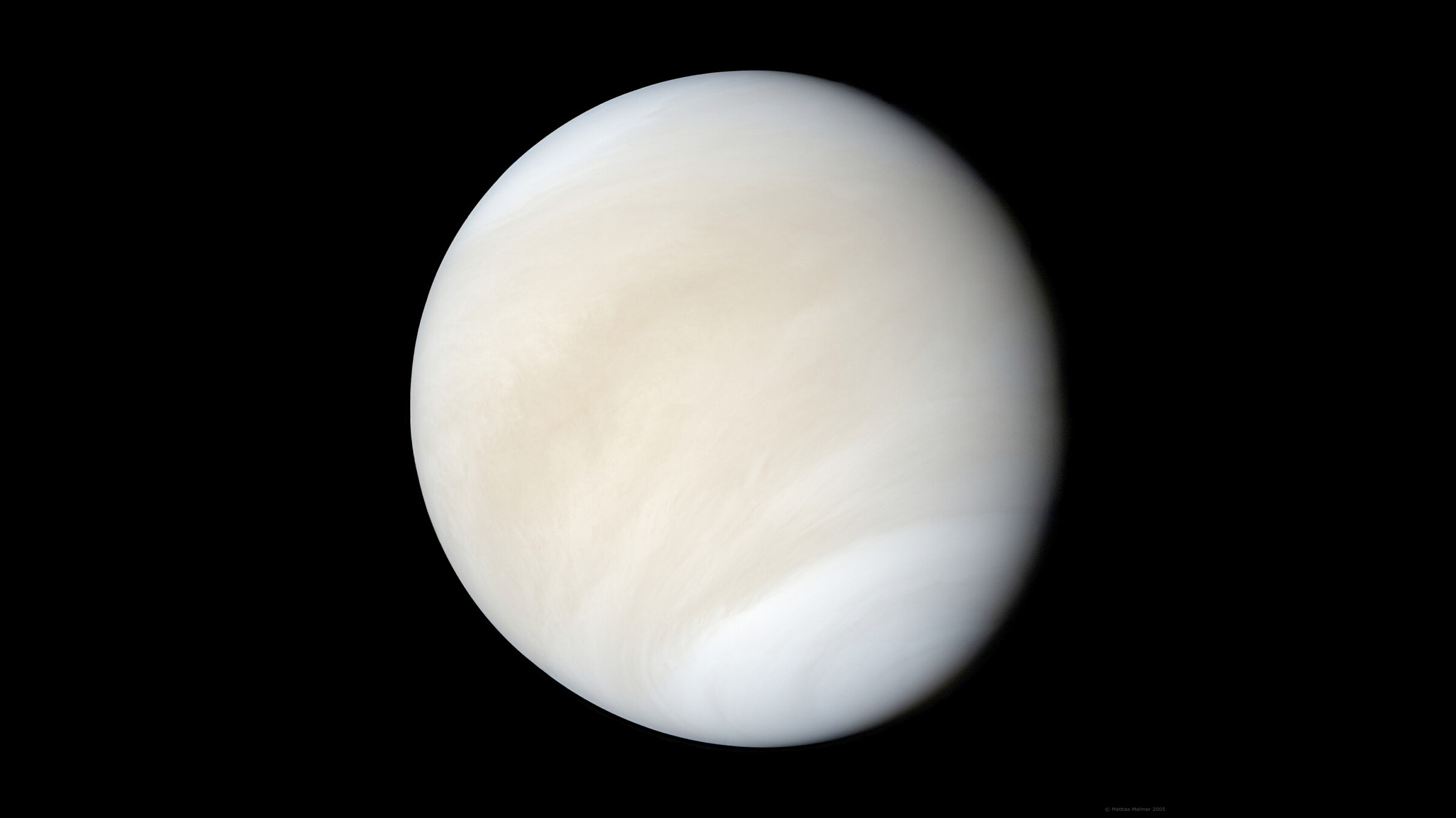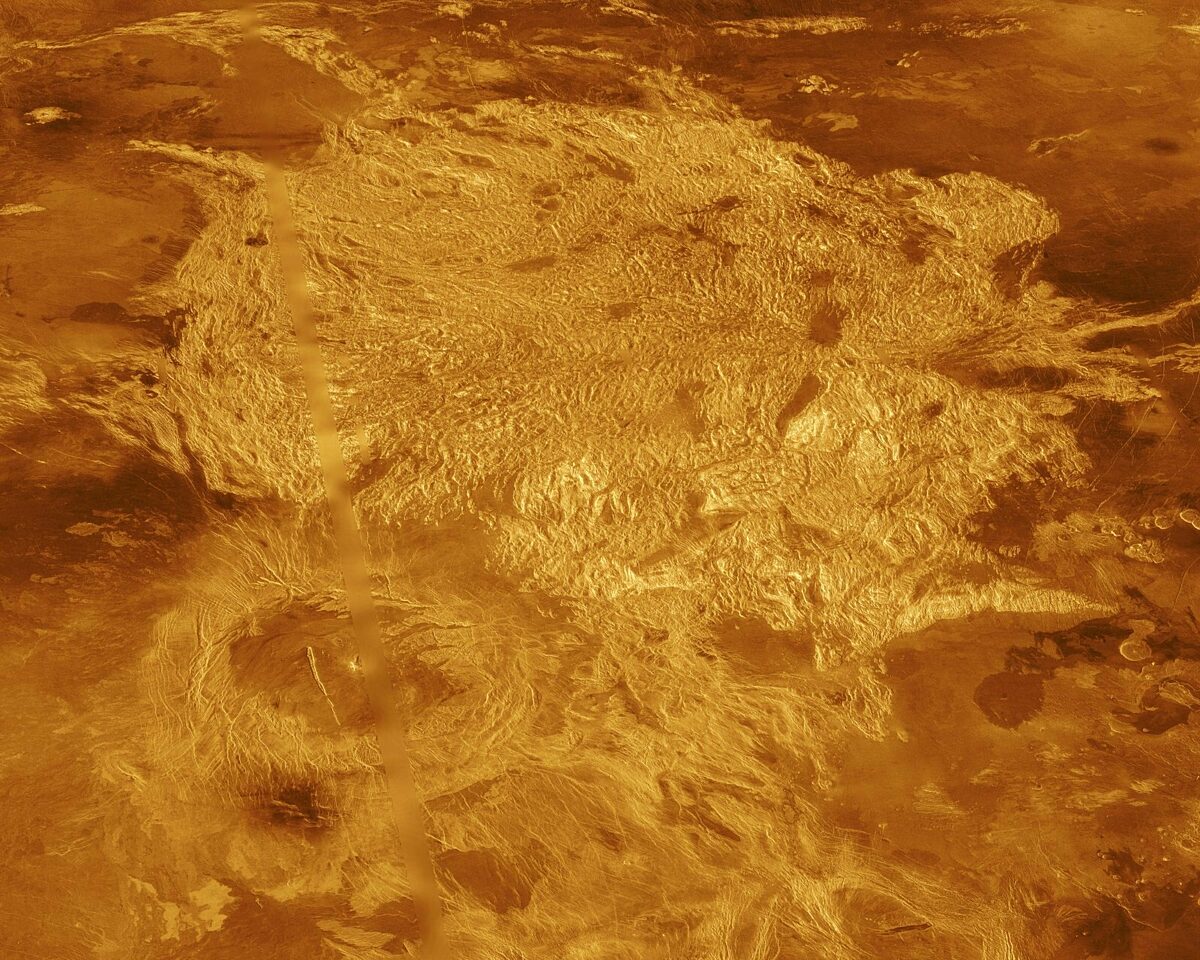Rae Paoletta • Jun 08, 2021
Double Venus missions: all the burning questions NASA hopes to answer
Say what you want about Venus — that it’s a hellscape, that it’s Earth’s “evil twin,” that it eats spacecraft whole — but you have to respect the planet’s consistency: it never does anything halfway.
With a surface temperature of about 465 degrees Celsius (roughly 900 degrees Fahrenheit) and a runaway greenhouse atmosphere, Venus is a world of endless extremes. It’s fascinating, to say the least. And yet NASA hasn’t sent a mission to the planet since Magellan arrived in 1990.
Thankfully, that’s all about to change.
On June 2, NASA announced it had selected two spacecraft — DAVINCI+ (Deep Atmosphere Venus Investigation of Noble gases, Chemistry, and Imaging, Plus) and VERITAS (Venus Emissivity, Radio Science, InSAR, Topography, and Spectroscopy) — to explore Earth’s closest cosmic neighbor. The agency chose both missions as part of its low-cost Discovery program; each will have a budget of $500 million to unpack Venus’ secrets. If all goes according to plan, DAVINCI+ and VERITAS will each launch sometime between 2028 and 2030.
The concept of complementary missions to Venus is both wildly exciting and totally unprecedented. Together, the probes will piece together our best-ever picture of Venus: DAVINCI+ will investigate Venus’ atmosphere and search for signs of a past ocean while VERITAS will map out the planet’s topography.
Because Earth and Venus are almost the same size and located in the same solar system, DAVINCI+ and VERITAS will have an exciting opportunity ahead of them — what they learn about Venus’ past and present will help us learn more about Earth.
Here are some of the biggest questions both missions hope to delve into:

Did Venus ever have an ocean?
The short answer is: we don’t know. But the noble gases in Venus' atmosphere — helium, neon, argon, krypton, xenon and radon — could tell a story about water on the planet, and how quickly it may have disappeared.
As part of DAVINCI+’s mission, the spacecraft will drop a sphere through Venus’ atmosphere to measure these non-reactive gases. Based on what it finds, different levels of noble gases could help scientists flesh out their ideas about Venus’ past habitability and evolution.
“Noble gases and their isotopes — and the abundance of those isotopes — give you a very clear indication of the interior properties of the planet,” Paul Byrne, a planetary geologist at NC State University, told The Planetary Society. “The idea is that if you’re able to measure the noble gas abundance and ratios of these different isotopes, you can draw indirect — but critical — information.”
DAVINCI+’s investigation into Venus’ noble gases will raise a host of questions. How much water might Venus have started out with? How much of that water may have evaporated into the planet’s atmosphere? Was Venus enveloped in magma, even in its early days? Or could some cataclysmic event have caused the planet’s carbon dioxide to escape into the atmosphere, triggering a greenhouse effect?
We’ll have to wait and see what DAVINCI+ and VERITAS dig up.
What’s up with Venus’ volcanoes?
Despite being a very old planet, Venus is relatively young on the outside. Maps created by NASA’s Magellan spacecraft suggest that about 500 million years ago, the planet underwent some sort of “resurfacing” that changed its exterior.
So what’s the secret to Venus’ youthful glow after 4.5 billion years? It could be volcanoes, but we can’t be sure. Although there’s evidence that volcanism has played an important role in Venus’ past, we know surprisingly little about present volcanic activity on the planet. In fact, active volcanism on Venus has never been directly imaged.
This is one area where DAVINCI+ and VERITAS will be critical. They’ll tie together the story of Venus’ volcanoes, its noble gases and potentially, its watery past. VERITAS in particular will analyze the planet’s infrared surface emissions to search for signs of past or present volcanic activity. The mission will also catalog different rock types, which could point to more evidence of recent or active volcanoes.
“A massive question is: was there some sort of catastrophic event, or more ongoing, steady volcanism that was more Earth-like?” NASA astronomer Sue Smrekar, VERITAS’ principal investigator, told The Planetary Society. “We’ll be able to determine what’s in the bottom of 80% of the craters which have dark floors. Is it volcanism?”
Smrekar and her team will also search for signs of active volcanoes spewing out water. Such a discovery could completely change our understanding of Venus’ interior.
“There’s this old idea that Venus’ interior is dry,” Smrekar said. “But Venus appears to be less outgassed than the Earth. It could have more water in its interior than Earth.”
Where are Venus’ tectonic plates?
Venus is full of strange little surprises; despite being peppered with volcanoes, it doesn’t appear to have plate tectonics.
On Earth, lighter tectonic plates shift beneath heavier ones in a process known as subduction, influencing both earthquakes and volcanoes. So how can Venus have so many volcanoes if it doesn’t have one of the key ingredients to creating them?
Both DAVINCI+ and VERITAS will probe this question, but DAVINCI+ will take the first-ever high-resolution images of some of the planet’s most fascinating features: heavily deformed regions called tesserae.

What in the world are tesserae?
We’re not sure, but here’s what we know: the tesserae are extremely distressed areas of terrain thought to be the oldest regions of Venus. Though they make up just 10% of Venus’ total surface, there’s evidence to suggest they may precede whatever re-surfacing Venus might have undergone hundreds of millions of years ago.
It’s still unclear what the tesserae are composed of, though, and whether they’re related to volcanic activity.
DAVINCI+ and VERITAS are on the case — or at least they will be soon enough. As part of its mission, DAVINCI+’s probe will descend near Venus’ surface to take high-resolution images of a tessera known as Alpha Regio. VERITAS will scope out geographic variations within the tessera plateaus and their surrounding plains.
“With DAVINCI+, we’ll get direct imaging and spectral measurements from this area, close-up, in a way that’s never been done before,” David Grinspoon, senior scientist at the Planetary Science Institute, told The Planetary Society. “That combined with VERITAS’ global mapping—I think this is really going to crack open some of Venus’ mysteries for us.”
One of those mysteries? Unpacking the possible link between Venus’ inner processes, the tesserae, and past or present plate tectonics.
“One of our questions is to test the hypothesis that the tessera plateaus are analogs of Earth’s continents,” Smrekar said. “We’ll be able to look at the tesserae globally and determine if there are variations within them.”
What can Venus teach us about habitable planets? Could there be life on Venus?
For all its hellishness, there’s evidence to suggest that Venus was once habitable, perhaps for billions of years. The recent debate on a possible phosphine detection in Venus’ clouds has stirred up new interest in life on the planet. DAVINCI+ may have the opportunity to offer some clarity here as it explores Venus’ atmosphere.
The idea of life somehow surviving in the Venusian hellscape raises so many questions here it’d be impossible to list them all. But from an astrobiology perspective, one is: what happened? Why did Earth develop continents and oceans where life was able to flourish, while Venus became a hothouse?
According to Byrne, if DAVINCI+ and VERITAS find that Venus is functionally the same as Earth and just suffered a random runaway greenhouse disaster, it could clue us into how similar-sized worlds function. It could also contextualize the climate history of Earth, as well as the propagation of life.
Because Earth and Venus are in some ways so similar, understanding where their pasts diverged can help explain their fate. But to some degree, it may be cosmic roulette.
“Whether Venus got unlucky or Earth got lucky,” Byrne said. “I can’t think of a bigger question.”
Support our core enterprises
Your support powers our mission to explore worlds, find life, and defend Earth. You make all the difference when you make a gift. Give today!
Donate

 Explore Worlds
Explore Worlds Find Life
Find Life Defend Earth
Defend Earth

